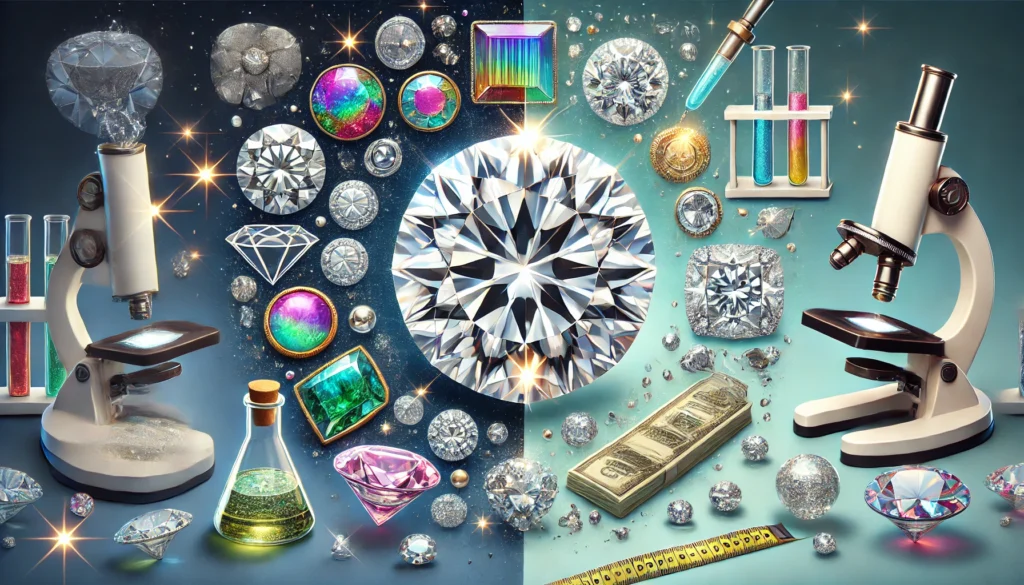
For centuries, diamonds have been a symbol of love, luxury, and eternal commitment, adorning countless engagement rings and treasured jewellery. However, despite their enduring popularity, diamonds are surrounded by a number of myths ingrained in popular culture. These misconceptions can cloud our understanding of these precious stones and even influence buying decisions. Let’s debunk some of the most common diamond myths and unveil the fascinating reality behind these sparkling gems.
Myth #1: Diamonds are the Rarest Gemstone
Diamonds are often portrayed as incredibly rare, contributing to their perceived high value. While they are certainly a valuable gemstone, their rarity is not as extreme as some might believe. Compared to other gemstones used in jewellery, like opals or emeralds, diamonds are indeed less common. However, the vast majority of mined diamonds are not gem-quality, meaning they lack the clarity, color, and cut necessary for use in jewellery. The rarity lies in finding diamonds that meet the stringent criteria for use in high-end pieces.
Myth #2: Bigger Diamonds are Always Better
While size can be a significant factor in diamond pricing, it’s not the sole determinant of value. The concept of “bigger is always better” can be misleading. The 4Cs of diamonds – cut, clarity, color, and carat weight – all play a crucial role in a diamond’s brilliance, beauty, and ultimately, its price. A well-cut diamond of smaller carat weight can sparkle more than a larger diamond with a poor cut.
Myth #3: Lab-Grown Diamonds are Less Valuable than Mined Diamonds
The rise of lab-grown diamonds has challenged some traditional notions. These diamonds are physically and chemically identical to mined diamonds, but they are created in a controlled laboratory environment. While lab-grown diamonds may be less expensive than mined diamonds of comparable quality, the price gap is narrowing. The ethical and environmental concerns surrounding mined diamonds are also leading some consumers to prefer lab-grown alternatives.
Myth #4: Diamonds are Indestructible
Diamonds are indeed the hardest natural substance on Earth, earning them the nickname “the eternal stone.” However, this doesn’t mean they are invincible. Diamonds can chip or even shatter if struck with enough force at the right angle. Additionally, exposure to extreme heat can damage a diamond’s internal structure, causing it to break or lose its brilliance. Proper care and storage are essential to protect your diamond jewellery.
Myth #5: All Diamonds are White or Colourless
While white or colourless diamonds are the most popular choice for engagement rings, they are not the only option. Diamonds come in a variety of shades, including yellow, pink, blue, and even black. These fancy coloured diamonds can be incredibly valuable, especially for stones with vivid and even colour saturation.
Myth #6: Antique Diamonds are Always More Valuable
Age alone doesn’t guarantee a diamond’s value. The cut quality of antique diamonds is often inferior to modern cuts, impacting their sparkle. The value of an antique diamond depends on its overall characteristics, including the 4Cs, historical significance, and rarity.
In conclusion, navigating the world of diamonds can lead to misconception. By debunking these common myths, it will be easier to approach diamond selection with a clearer eye, prioritizing the qualities that truly matter – brilliance, beauty, and ethical considerations.

